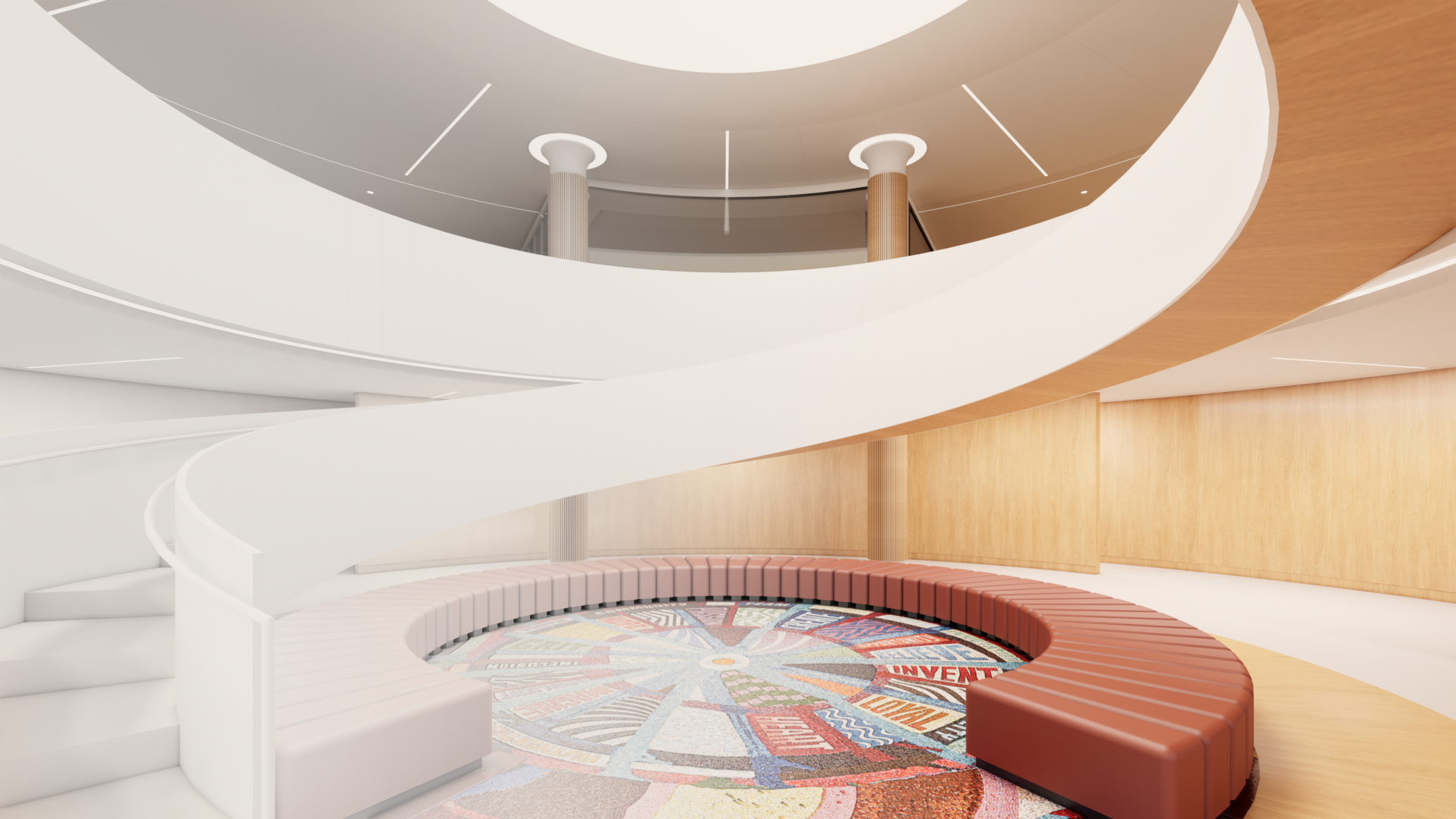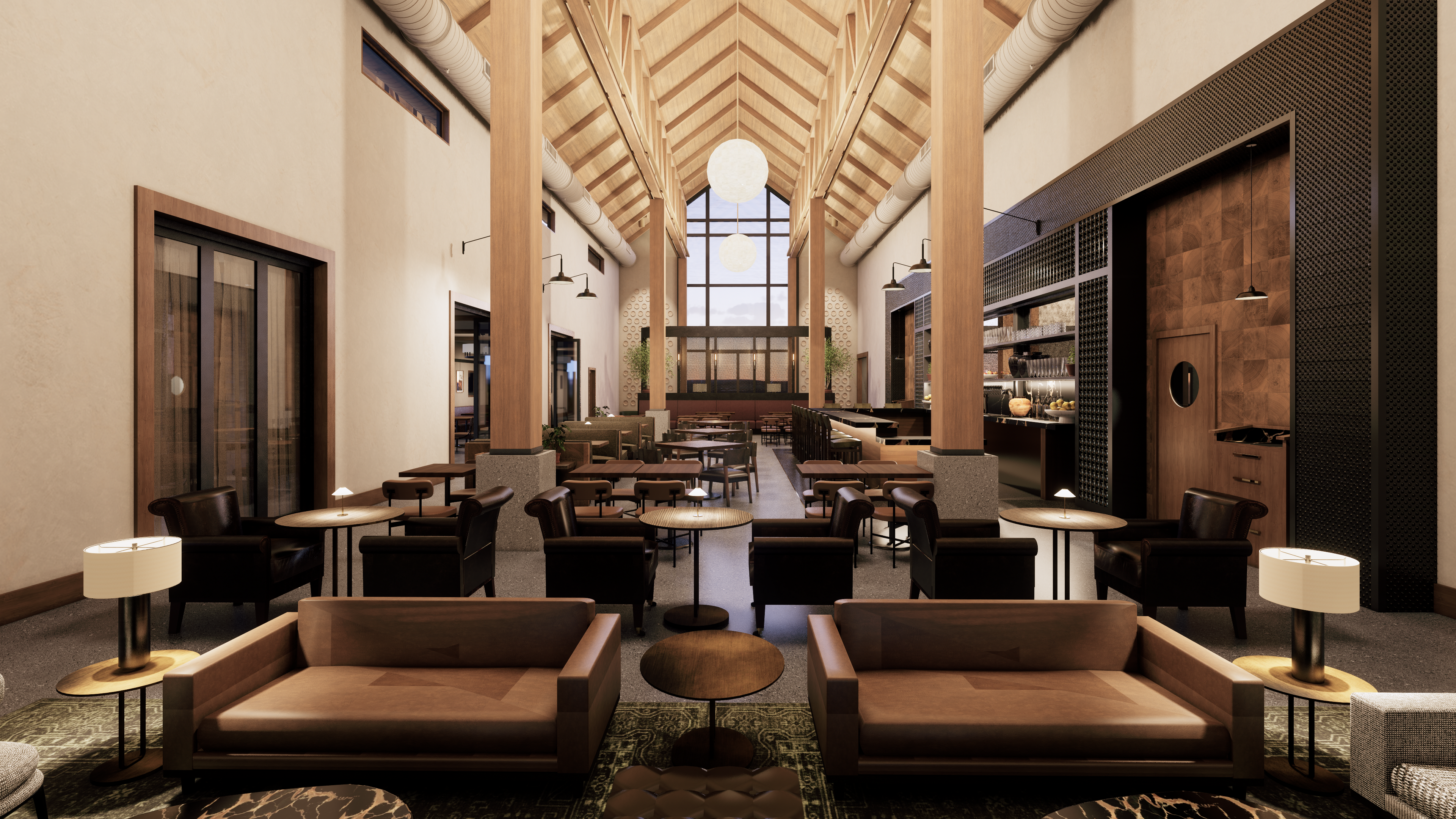The Future of 3D Design
 Read Below
Read Below
 Read Below
Read Below
The Future of 3D Design
3D design has emerged as an indispensable tool within the Interior Design industry, revolutionizing the creative process and enhancing the ability to visualize spaces before they come to life. Pophouse Project Designers, Adam Franzel and Maykle Welke, underscore the critical role of 3D design in translating design concepts within creative teams and with clients at Pophouse. By harnessing the power of digital modeling and rendering technologies, our designers can experiment with various layouts and materials, collaborate, and fine-tune details with unprecedented precision. The visualization process streamlines communication between designers and empowers stakeholders to make informed decisions, ensuring that our final design aligns seamlessly with expectations and functional requirements.
3D visuals are powerful communication tools, bridging the gap between designers and clients by offering a lifelike preview of the proposed design. By visualizing specified finishes, textures, and other architectural elements, our designers can ensure that the final product aligns seamlessly with the client’s expectations, fostering a collaborative and informed decision-making process. Our team utilizes photorealistic renderings and immersive VR experiences, to effectively showcase their vision to prospective clients and stakeholders. These compelling renderings instill confidence, facilitating stakeholder buy-in and often fast-tracking project approvals.
At Pophouse, we integrate visualization tools throughout the entire creative process. The 3D process often begins with a CAD floorplan or Revit model, serving as the foundational blueprint. From there, our Project Designers meticulously construct the model, integrating material selections, furniture, and fixtures. This process is highly collaborative, leveraging all design disciplines for their collective expertise to effectively convey the design narrative through the built environment.

The utilization of different types of 3D renderings offers distinct advantages in conveying spatial concepts and design narratives. Our process can include static renderings, flythrough animations, or fully immersive virtual reality visualizations. A static 3D rendering provides a snapshot of a space, offering detailed visualizations of layouts, materials, and lighting. It serves as a polished presentation tool, allowing our designers to showcase their vision from multiple angles and perspectives. The 3D model can also be utilized for fly-through animations that take viewers on a dynamic journey through space, offering a fluid, immersive experience. This animated approach provides a comprehensive understanding of spatial flow and architectural volume and massing, offering clients a realistic preview of how spaces will be experienced in real-time. Our virtual reality experience takes immersion to the next level, enabling users to actively engage with the environment through a virtual reality headset. This technology allows clients to explore spaces firsthand, interact with elements, and experience scale and proportion in a lifelike manner.

The future of 3D design is positioned for remarkable advancements, particularly tied to the integration of AI with innovative tools like DALI and Firefly. Our team is constantly experimenting and testing new software and tools to adapt and innovate within our process and design delivery methods. These technologies can revolutionize the Pre-Design and discovery phase of a project, streamlining the translation of conceptual ideas into visualizations and inspiration. This process expedites alignment and fosters greater creativity and collaboration between project teams and clients.

3D design and visualization tools are a crucial cornerstone of modern Interior Design, offering a comprehensive toolkit for envisioning, refining, and presenting spatial concepts. By prioritizing visualization within our practice, our team elevates the entire design process, from conceptualization to realization, while fostering stronger client relationships and driving business success. It’s pivotal role in facilitating collaboration, streamlining communication, and enhancing visualization underscores its enduring importance in shaping the built environment of tomorrow.
Next Story
